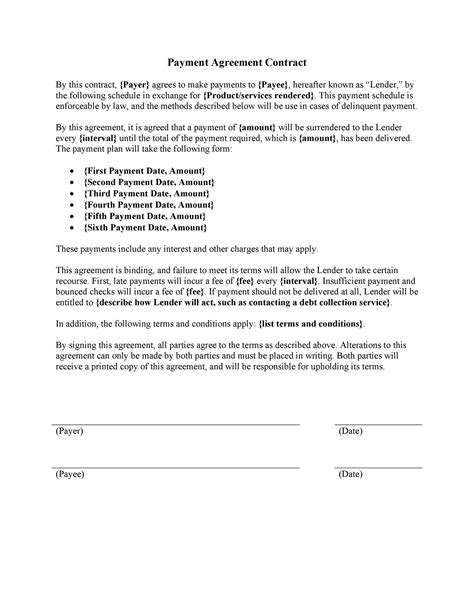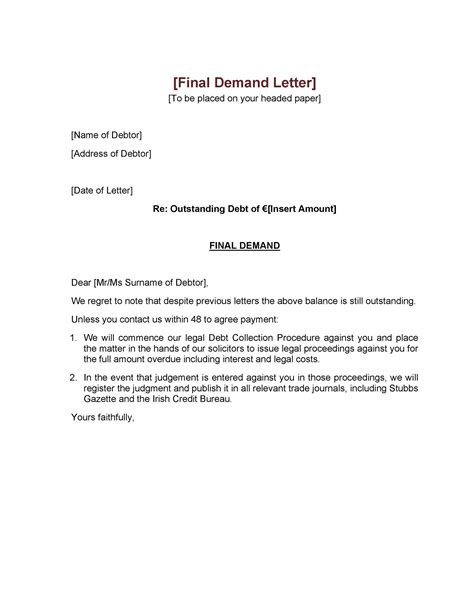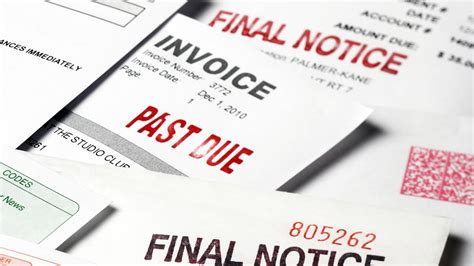Understanding the Client’s Perspective
As a business owner or service provider, dealing with clients who refuse to pay their bills can be one of the most frustrating parts of your job. It’s easy to label them as dishonest or unscrupulous, but it’s important to remember that there are often legitimate reasons why clients may be unable or unwilling to pay. Understanding the client’s perspective can help you approach the situation with empathy and find a solution that works for both parties.
One common reason why clients may not pay is that they feel they have been overcharged or that the work you provided was not up to their expectations. This may be due to a misunderstanding about the scope of the project or a lack of clarity in your communication.
To avoid this issue, be sure to establish clear and transparent pricing structures upfront, and make sure you are on the same page with the client about the work to be completed. Communicate regularly and make yourself available to answer any questions they may have throughout the process.
Another reason why clients may not pay is that they are experiencing financial difficulties. This can be particularly common for small businesses or independent contractors who may be struggling with cash flow or unexpected expenses.
If you suspect this is the case, try to approach the situation with empathy and understanding. Rather than demanding payment in full, you may want to offer a payment plan or negotiate a partial payment in order to ease their financial burden.
Finally, it’s important to remember that sometimes clients may be intentionally avoiding payment. This could be due to a variety of reasons, from a disagreement over the quality of work to a lack of trust in your business.
In these cases, it’s important to remain professional and objective. Communicate clearly and firmly about your expectations and the consequences of nonpayment, but also be open to listening to their concerns and finding a solution that works for both parties. Ultimately, taking a collaborative and solution-focused approach can help you avoid costly legal battles and maintain positive relationships with your clients over the long term.
Communication is Key
Collecting money from clients who refuse to pay can be a frustrating process for any business owner. However, with the right approach and communication skills, you can increase your chances of receiving the payments you are owed. Here are some key communication tactics you can use to assist in your debt recovery efforts:
1. Be Proactive in Your Communication
It’s important to be proactive in your communication with clients who have overdue payments. Waiting until the due date has passed, or worse, waiting until they are months overdue, can result in further delays and even more difficulties in collecting the payment. Contract and set expectations early by sending a reminder email or text message stating the payment’s due date before the deadline. This communication could be as simple as an email that you send in advance, or text messages if that’s the preferred way of communication. Additionally, sending in a monthly invoice reflecting the balance on the account will remind your client of the outstanding debt.
2. Have Honest Conversations
Honesty and transparency is crucial when trying to collect payment from clients. Avoid veiled statements or appearing enigmatic about your payment collection process. Speak straightforwardly to your clients and tell them the reason for the communication. Be deliberate in conveying the legal implications contacting them to get these payments may result in. But be sure not to threaten them or badger them as these tactics can only worsen your chances of getting paid. Let them know the consequences of inaction clearly and the benefit for mutual benefit if the debt is settled as soon as possible before it gets out of hands.
Frequently, clients who have overdue payments may also be having financial difficulties or issues with their payments requested for their businesses. Therefore, try to find out from them the reasons for the delays and try to work out a payment plan that works for them that speeds up the payment. Always remember to also make future payment processes clear and timely. Accepting payments from clients in installments may be advisable, but if that doesn’t work, at least get a clear commitment on the expected payment date.
3. Follow-Up Regularly
In any debt recovery process, maintaining communication is vital. Ensure you follow up often with your clients to remind them of the payment agreement that you both agreed to. This could be weekly, monthly, or quarterly depending on the case. It’s important to find the right balance of follow-up communication because too much of it can become annoying, while too little communication can result in you being forgotten.
However, the follow-up strategy may also depend on how long the customer has been in arrears. For example, if a customer is one month overdue, try to follow up often with them, but if they are three months overdue, the mode of contact should be more robust. Try to establish a possible lien through a collection agency, and if possible, withhold future service offering until the outstanding debt is settled.
In conclusion, communication is a crucial skill in every business owner’s toolkit for debt collection. Be proactive in your communication, have honest conversations, and follow up regularly to achieve the optimum amount of debt recovery. Through honest discussions and a commitment to reaching a resolution, you have a greater chance of securing long-term partnership with clients who feel valued and understood.
Enforcing Contracts and Payment Terms

After taking all the measures to avoid non-payment cases, such as setting clear payment terms, sending reminders, and following up with clients, some may still refuse to pay for services rendered. If you find yourself dealing with an unresponsive or non-paying client, here are some steps you can take to enforce the contract and get the payment you are owed.
1. Send a Demand Letter

A demand letter is a formal written request for payment made to a party who has failed to pay an obligation. It should be sent as soon as possible after the payment date has elapsed, outlining the amount owed, the payment terms, and a due date for payment. The letter should also indicate the steps that will be taken if payment is not received, such as legal action. A demand letter may convince the client to pay and avoid further legal action, saving you both time and money.
2. File a Lawsuit

If all else fails and the client refuses to pay, you may need to file a lawsuit to collect payment. This is a time-consuming and expensive process, so it’s important to evaluate the amount owed and the chance of success before taking legal action. You will need to hire an attorney and provide evidence of the contract and services provided, as well as prove that you have exhausted all other options before filing the lawsuit. A court judgment can be used to collect the amount owed, including interest, attorney’s fees, and court costs.
3. Use a Collection Agency

Another option is to use a collection agency to collect the debt on your behalf. Collection agencies are companies that specialize in recovering unpaid debts from individuals or businesses. They may charge a fee or take a percentage of the amount collected, but they can often be more successful in collecting the debt than an individual. However, the use of a collection agency may damage the relationship with the client, so it should be used as a last resort.
In summary, enforcing contracts and payment terms can be a challenging process, but it’s crucial to collect payment for services rendered. By taking the steps outlined above, you can increase your chances of getting paid and avoid non-payment cases in the future. Remember to document all communication and take notes of any actions taken to ensure you have evidence for legal proceedings if necessary.
Legal Action as a Last Resort
When all other methods have failed and the client still refuses to pay, it may be time to consider legal action as a last resort. Legal action should not be taken lightly as it can be time-consuming, costly, and potentially damaging to your business relationships.
Before considering legal action, it’s important to review your contract and ensure that you have a solid legal basis for pursuing a claim. This may include reviewing payment terms, delivery of goods or services, and any disputes or disagreements that may have arisen throughout the contract period.
Once you’ve determined that you have a strong case, you can begin the legal process by sending a demand letter. This letter should outline the amount owed, the reason for the debt, and a deadline for payment. If the client does not respond or still refuses to pay, you’ll need to engage the services of a lawyer and pursue a lawsuit.
The legal process can be lengthy and complex, therefore it’s important to have a lawyer who is experienced in debt collection and has a deep understanding of the legal system. Working with a lawyer can also help to protect your business interests and ensure that your case is presented in the strongest possible light.
There are several legal options available to you, depending on the amount owed and the type of debt. These may include filing a lawsuit in small claims court, submitting a claim to a collection agency, or pursuing arbitration or mediation. It’s important to weigh the pros and cons of each option and choose the one that best suits your needs and circumstances.
It’s important to note that legal action should always be considered as a last resort. While it may be tempting to pursue aggressive legal action against a delinquent client, it’s important to evaluate the potential costs and risks before proceeding. Pursuing legal action can be a lengthy and arduous process, so it’s important to stay patient, persistent, and focused on achieving your goals.
When dealing with clients who refuse to pay, it’s important to remain calm, professional, and persistent. By taking a systematic and proactive approach to debt collection, you can increase your chances of recovering outstanding debts and minimizing the financial impact on your business.
Strategies to Avoid Late Payments in the Future
One of the most frustrating aspects of running a business is dealing with clients who don’t pay on time. Late payments can have a significant impact on your cash flow and can even lead to the failure of your business. To avoid the stress and inconvenience of chasing late payments, it’s important to implement some strategies to encourage clients to pay on time. Here are some strategies you could use:
1. Invoice Promptly and Accurately
One of the most common reasons for late payments is that the invoice does not get sent out promptly or there are inaccuracies in the invoice. Ensure that your invoices are sent out immediately after the work is completed, and check that the amount invoiced is accurate. If the invoice contains errors, this may cause confusion and delay payment.
2. Set Clear Payment Terms
It’s important to set clear payment terms and communicate these to your clients upfront. Make sure your clients understand your payment policies. For example, you could specify that payment is due within 14 days of the invoice date. This way, clients are aware of their obligations and can plan ahead to meet their payment commitments.
3. Offer Incentives for Early Payment
Offering incentives for early payment can be an effective way to encourage clients to pay on time. For example, you could offer a discount or a small gift for clients who pay within a certain timeframe. This can be a win-win situation for both you and your clients. You get paid on time, and your client gets a reward for prompt payment.
4. Use Payment Reminder Systems
If your client has not paid by the due date, sending a payment reminder can be an effective way to get their attention. You could send a friendly reminder email or call them to gently follow-up on the unpaid invoice. This approach can work well, especially if the client has simply forgotten to pay and a gentle reminder is all that is needed.
5. Implement Late Payment Fees
If your client still hasn’t paid despite all your efforts, you could consider implementing late payment fees. Late payment fees can act as a deterrent and encourage clients to pay on time. You could set a percentage fee that the client has to pay on top of the amount they owe if they do not pay within the specified timeframe. Make sure this is clearly stated in your payment terms and communicated to your clients upfront.
Implementing these strategies can help to minimize the potential damage caused by late payments and will help to ensure that your cash flow remains healthy. If you experience difficulties with a particular client repeatedly, make sure to review your working relationship with them and take appropriate action if necessary.


